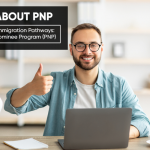Are you considering getting married in Australia and want to bring your partner from overseas? The Prospective Marriage Visa (Subclass 300) is a popular option for individuals who are engaged to be married and want their fiancés to join them in Australia. This visa allows a fiancé of an Australian citizen, permanent resident, or eligible New Zealand citizen to come to Australia and get married. In this blog post, we will explore the requirements for obtaining a Prospective Marriage Visa, the differences between this visa and other visas like the Partner Visa and Spouse Visa, and the overall benefits of immigration to Australia.
Understanding the Prospective Marriage Visa (Subclass 300)
The Prospective Marriage Visa (Subclass 300), often referred to as the fiancé visa, allows a person to enter Australia to marry their partner within a period of 9 months. This visa is suitable for those who have not yet married their partner but intend to do so. Unlike the Partner Visa Australia (Subclass 820/801) or the Spouse Visa, which are designed for individuals who are already married or in a de facto relationship, the Prospective Marriage Visa specifically caters to those who are planning to get married in the near future.
Key Requirements for the Prospective Marriage Visa
To begin with, understanding the key requirements for the Prospective Marriage Visa is crucial. Additionally, applicants must demonstrate genuine intentions. Furthermore, they need to meet specific financial criteria. Consequently, thorough preparation is essential.
To apply for a Prospective Marriage Visa, you must meet several key requirements:
- Genuine Relationship: The applicant must demonstrate a genuine intention to marry their partner and live with them as a married couple. This involves providing substantial evidence of a genuine relationship, such as photographs together, communication records, joint travel plans, and testimonials from friends and family.
- Sponsorship by an Australian Partner: The applicant must be sponsored by their partner, who must be an Australian citizen, Australian permanent resident, or eligible New Zealand citizen. The sponsor must also meet certain character requirements and provide a written statement supporting the relationship and the intended marriage.
- Meet Health and Character Requirements: Both the applicant and the sponsor must meet health and character requirements. This typically involves undergoing medical examinations and providing police certificates from countries. Where the applicant has lived for a certain period.
- Intention to Marry Within 9 Months: The couple must have a genuine intention to marry within the 9-month validity period of the visa. Evidence such as wedding plans, booking confirmations, and arrangements for the ceremony can help demonstrate this intention.
- Age Requirements: Both parties must be at least 18 years old at the time of the visa application.
- Previous Relationship History: Applicants must provide details of their previous relationships, if any, and any children from those relationships. This ensures transparency and assists in verifying the genuine nature of the new relationship.
- Financial Support: While there is no strict requirement for a certain income level. The sponsor must show that they can support their partner financially, especially. If the applicant does not intend to work immediately upon arrival in Australia.
How to Apply for the Prospective Marriage Visa
The application process for the Prospective Marriage Visa involves several steps:
- Prepare Documentation: Gather all necessary documentation, including identity documents, proof of the relationship, health and character certificates. And a written statement from the sponsor.
- Submit the Application: The visa application must be submitted online through the Australian Department of Home Affairs website. The application will require detailed information about both the applicant and the sponsor. Including their relationship history, plans for the marriage, and intentions to live in Australia.
- Pay the Visa Fee: There is a fee associated with the Prospective Marriage Visa application. This fee is non-refundable, even if the visa is denied.
- Wait for Processing: Visa processing times can vary depending on several factors, including the applicant's country of origin, the completeness of the application, and the current workload of the immigration department. It is essential to check the latest processing times and prepare for potential delays.
- Health Examinations and Police Checks: As part of the application process, the applicant and their sponsor may be required to undergo health examinations and provide police checks. Complete these before we grant the visa.
- Receive the Visa Decision: Once the application has been processed, a decision will be made. If granted, the visa allows the applicant to enter Australia to marry their partner within the specified 9-month period.
Benefits of the Prospective Marriage Visa
Firstly, the Prospective Marriage Visa allows couples to live together in Australia. Additionally, it provides the opportunity to plan a future together. Moreover, it offers a pathway to permanent residency. Consequently, this visa facilitates both relationship stability and long-term security.
Opting for a Prospective Marriage Visa has several benefits:
- Flexibility to Marry in Australia: This visa provides the flexibility to marry in Australia. Offering couples the opportunity to celebrate their marriage in the presence of friends and family.
- Pathway to Permanent Residency: After marrying their partner, the visa holder can apply for a Partner Visa (Subclass 820/801), which provides a pathway to permanent residency in Australia. This transition is relatively straightforward for those who have already demonstrated a genuine relationship.
- Work and Study Rights: The Prospective Marriage Visa allows holders to work and study in Australia while they prepare for their marriage. Providing an opportunity to integrate into Australian society and contribute to the economy.
- Access to Healthcare: Visa holders have access to Australia's public healthcare system (Medicare) after they have applied for a Partner Visa. Ensure they cover medical expenses.
- Cultural and Lifestyle Opportunities: Living in Australia offers a high standard of living, diverse cultural experiences, and a relaxed lifestyle. Which are significant benefits of immigration to Australia.
Navigating the Application with Immigration Experts
Initially, navigating the application process can be overwhelming. However, working with immigration experts simplifies this journey. Furthermore, their expertise provides valuable guidance. Additionally, they ensure all documents are correctly prepared. Consequently, this support enhances your chances of a successful application. Ultimately, their assistance streamlines the entire process effectively.
Applying for a Prospective Marriage Visa can be complex and requires careful preparation. It is advisable to consult with immigration experts who can provide guidance on the process, help prepare documentation, and ensure all requirements are met. These professionals have extensive experience in dealing with Australian immigration laws. And, consequently, can significantly increase the chances of a successful application.
Conclusion
The Prospective Marriage Visa is an excellent option for those looking to marry their partner in Australia. By understanding the visa requirements, preparing the necessary documentation. And considering the potential benefits, couples can navigate the immigration process more effectively. For a smoother journey, seeking advice from immigration experts can make all the difference. With careful planning and the right support. This visa opens the door to new opportunities and a promising future in Australia.






